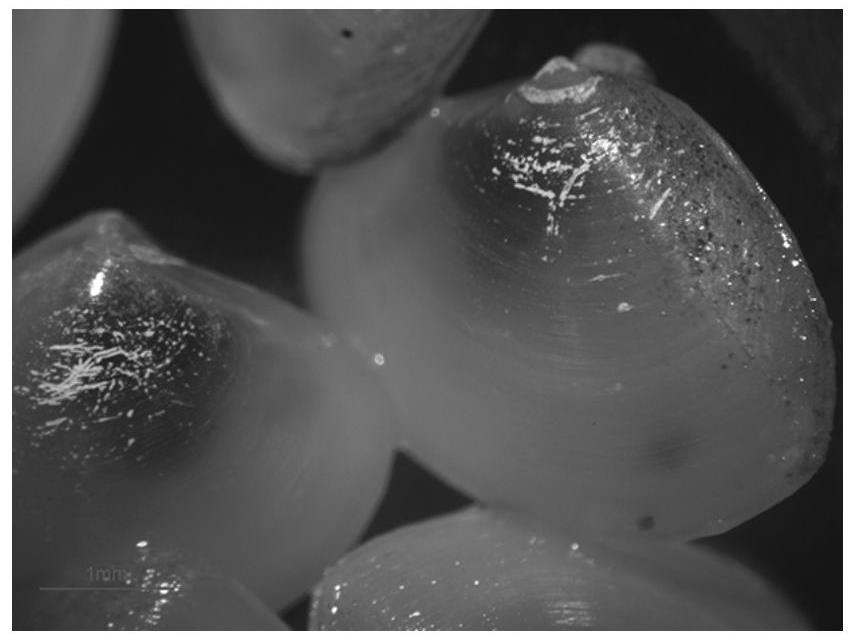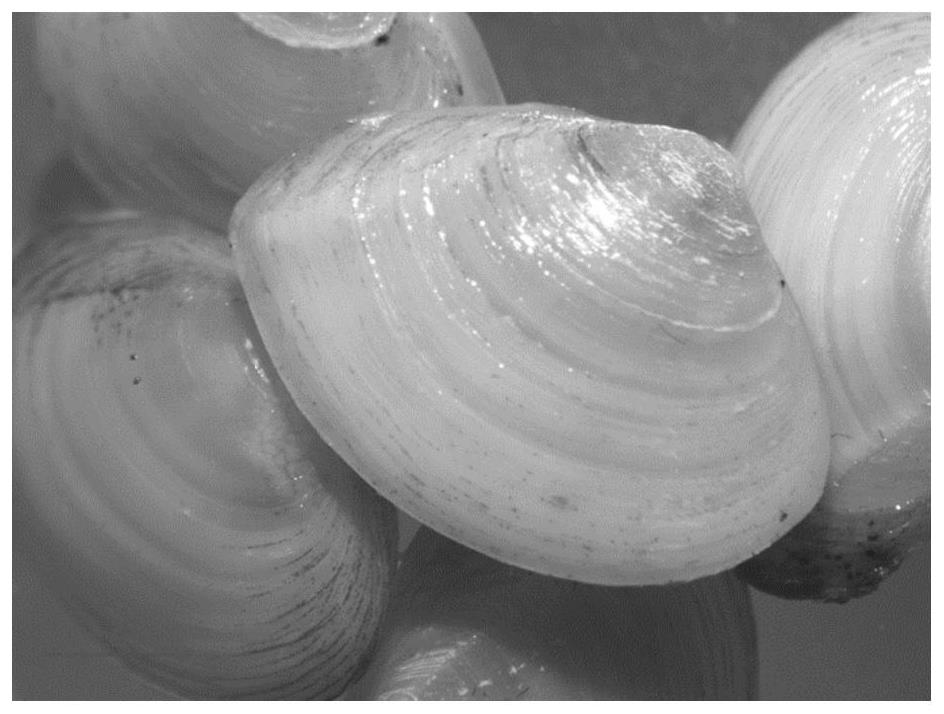Introduction and breeding method for Mulinia lateralis Say
A dwarf and artificial breeding technology, applied in fish farming, application, climate change adaptation, etc., can solve the problems of no natural distribution, lack of artificial breeding technology, no artificial breeding of dwarf clams, etc.
- Summary
- Abstract
- Description
- Claims
- Application Information
AI Technical Summary
Problems solved by technology
Method used
Image
Examples
Embodiment 1
[0031] Embodiment 1 parental maturation promotion and induced labor hatching
[0032] Select 500 adults of the second-generation population of dwarf clams with a shell length of about 3-5 mm for artificial breeding. The adult dwarf clams selected are as follows: figure 1 shown.
[0033] 1. Parental maturation:
[0034] Put the selected dwarf clam individuals into the parental maturation pond, and use circulating water for breeding, such as figure 2 As shown, or the circulation system commonly used in aquaculture; the specific operation is as follows:
[0035] Parental ripening pond: wash the pond with fresh water first (including the trachea, air stone and pool plug), then fill it up with fresh water, add 10ml 84 disinfectant and soak for at least 6 hours, after the end, scrub carefully with fresh water twice, and then Rinse it with sea water, and finally add about 4 / 5 of sea water and supply oxygen.
[0036] Adding of attachment base (sand): dwarf clam is a buried type s...
Embodiment 2
[0047] Embodiment 2: larva cultivation:
[0048] Selection of the best: After the hatching process, poor quality larvae and unsuccessfully developed fertilized eggs will sink to the bottom of the glass tank. The shell length of D-shaped larvae of dwarf clams is generally less than 60um, so the 400-mesh sieve is used to filter and collect the floating larvae, and transfer them to a new sterilized glass tank, add filtered seawater at 24°C, write a label, and sink. Discard all of the bottom. In addition, the selected tools need to be sterilized in advance
[0049] Larva cultivation: After selection, it enters the stage of larva cultivation, where the larvae are small and have poor adaptability to the environment. They have high requirements for water quality and must be carefully managed. Every day, observe changes in room temperature, water temperature, and water color, as well as the feeding and growth status of the larvae, whether the inflation is normal, and the development...
PUM
 Login to View More
Login to View More Abstract
Description
Claims
Application Information
 Login to View More
Login to View More - R&D
- Intellectual Property
- Life Sciences
- Materials
- Tech Scout
- Unparalleled Data Quality
- Higher Quality Content
- 60% Fewer Hallucinations
Browse by: Latest US Patents, China's latest patents, Technical Efficacy Thesaurus, Application Domain, Technology Topic, Popular Technical Reports.
© 2025 PatSnap. All rights reserved.Legal|Privacy policy|Modern Slavery Act Transparency Statement|Sitemap|About US| Contact US: help@patsnap.com



